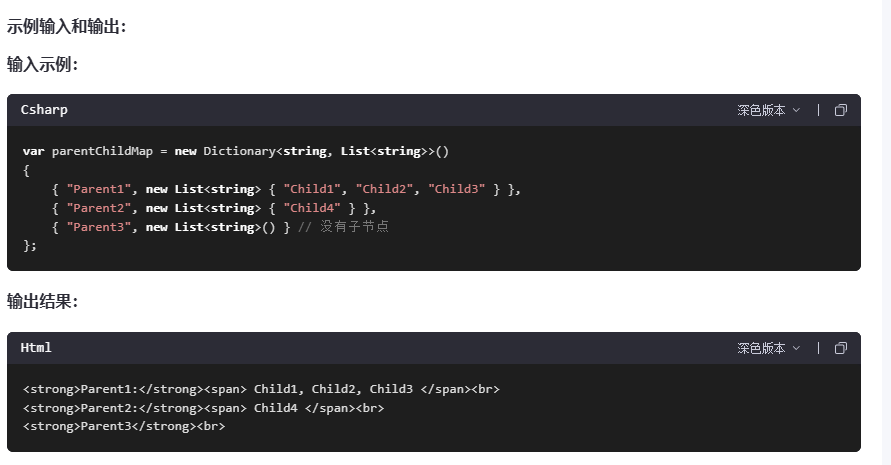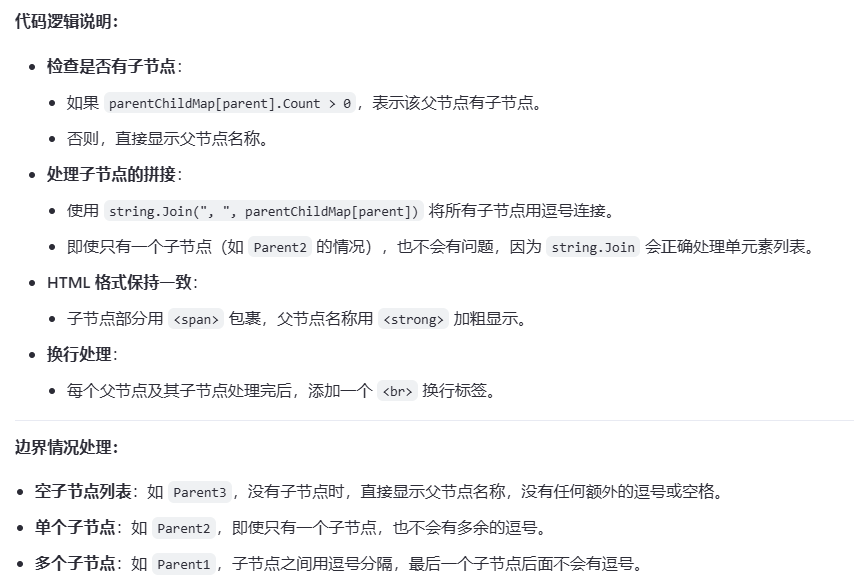复习4【c#】:string.Join的用法
需求:有一个字典类型数据,要求输入及输出如下:

后端处理代码如下:
using System.Collections.Generic; using System.Text; using System.Web.Mvc; namespace CloudCodeTest.Controllers { public class StringJoinController : Controller { // GET: StringJoin public ActionResult Index() { var parentChildMap = new Dictionary<string, List<string>>() { { "Parent1", new List<string> { "Child1", "Child2", "Child3" } }, { "Parent2", new List<string> { "Child4" } }, { "Parent3", new List<string>() } // 没有子节点 }; StringBuilder sb = new StringBuilder(); foreach (var parent in parentChildMap.Keys) { if (parentChildMap[parent].Count > 0) { // 父节点名称 sb.Append($"<strong>{parent}:</strong>"); // 使用 string.Join 将子节点用逗号连接 sb.Append("<span> " + string.Join(", ", parentChildMap[parent]) + " </span>"); } else { // 没有子节点时,仅显示父节点名称 sb.Append($"<strong>{parent}</strong>"); } // 每个父节点后添加换行 sb.Append("<br>"); } var finalNote = sb.ToString(); return View(); } } }
使用string.Join的优点如下:(来自通义解释)

其他边界点分析如下:(来自通义解释)

本文来自博客园,转载请注明原文链接:https://www.cnblogs.com/keeplearningandsharing/p/18828935



 浙公网安备 33010602011771号
浙公网安备 33010602011771号